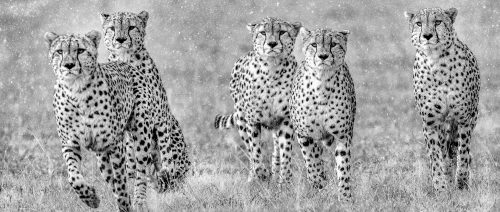
Update: As of early 2022, two of the Tano Bora brothers, Olpadan and Olarishani, have passed away. Not much is known about their deaths but since then the remaining three brothers, now called the Tatu Bora, have been seen together and are frequently sighted between the Maasai Mara National Reserve and the conservancies to the north of the reserve.
There is something about a cheetah's behaviour that evokes a sense of fragility. Perhaps it’s their slender frame, or maybe it’s their shy demeanour and constant vigilance as they scout the horizon for signs of a threat in the form of a more powerful predator.
I think this is one of the reasons that the Fast Five, or Tano Bora - a coalition of five male cheetah - have captured the hearts and lenses of so many aficionados who have gone on game drive in the Mara and turned this perception on its head.
As the largest known male cheetah coalition in the Mara, the Tano Bora (which means ‘The Magnificent Five’ in Maa) has challenged many assumptions about typical cheetah behaviour. Typically, once reaching adulthood, male cheetah will become solitary or perhaps join another to form a pair. It is very rare to see a group this large bonding together.
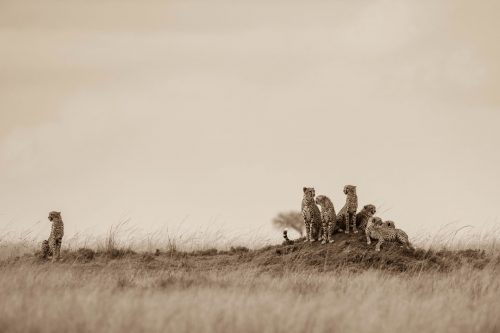
This formidable quintet, which have claimed the Mara as their stomping ground since 2016, have become known for their incredible take-downs of huge prey, making them a firm favourite for some of the most striking entries in The Greatest Maasai Mara Photographer of the Year through the years. There are few scenes as remarkable as all of the Fast Five in full-speed pursuit, or mid-kill committing their full bodyweight to bring an adult wildebeest down to the ground.
Surprisingly, the five aren’t all brothers as some may assume - only two are known to have come from the same litter. And it is certain that one is a lone cheetah that joined the others despite no familial relationship.
Over the years, unique character traits of each of the individuals have emerged and they have been named accordingly. Olpadan (‘Great Shooter’ in Maa) was the leader of the group up until recently. He could also be a bit of a bully, with Olonyok (‘The one who puts efforts to achieve better results’ in Maa’) being the favourite target of his aggressive outbursts.
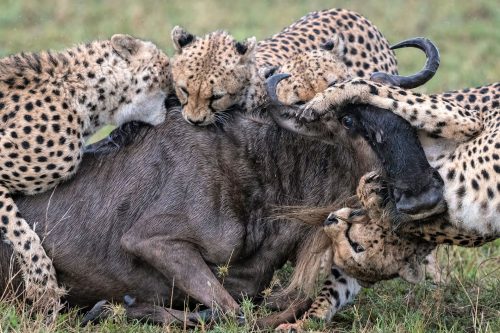
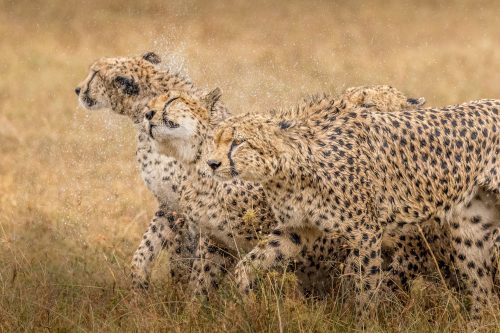
Olarishani (‘Judge’ in Maa) is not only a great hunter, but also the one who tends to come to the defense of his coalition-mates when squabbles arise. Always happy to go along with the general consensus is Leboo (‘The one who is always within a group in Maa), while Winda (‘Hunting’ in Kiswahili) certainly lives up to his name.
And despite clearly getting on each other’s nerves from time to time (in the most recent incident, Olpadan emerged with a rather serious injury to his nether regions courtesy of his coalition mates), the benefits of their collective power seem to outweigh the drawbacks: dominance over their territory, a higher success rate in taking down prey and their choice of a selection of adoring females.
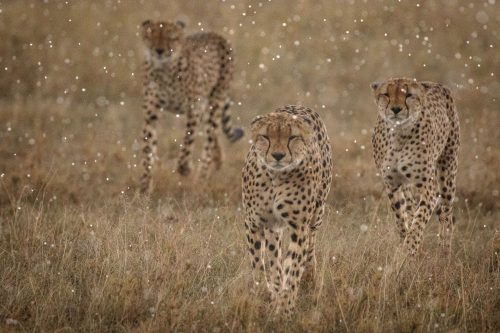
While they usually separate to breed, sometimes multiple coalition members will mate with the same female, and the confusion over paternity once the cubs are born has meant that the Tano Bora males are less likely to attack the cubs they come across, always unsure whether it’s their kin or one of their coalition mate’s.
Being around six years’ old now – there is no doubt that the Tano Bora will continue to surprise us. And delight the photographers who have devoted themselves to immortalising their story for the world to enjoy.
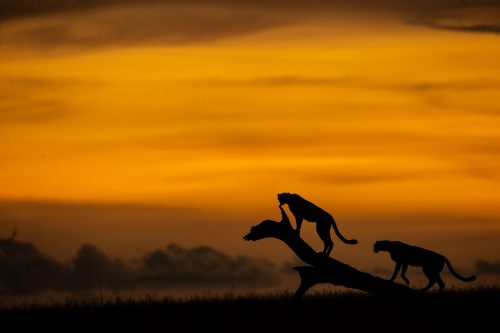
All images within this blog story are courtesy of The Greatest Maasai Mara Photographer of the Year. We look forward to learning more about Tano Bora and their antics through the competition entries. Enter your photographs now for a chance to be named the Greatest Maasai Mara Photographer of the year. Good luck!
Filed under: The Mara
Subscribe for Weekly Stories
Comments (0):
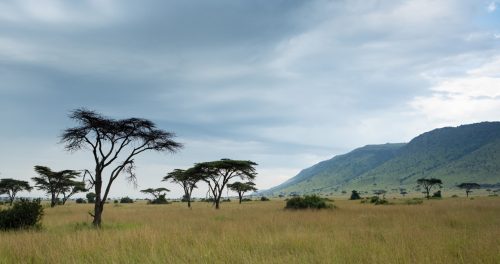
Angama Safari Camp